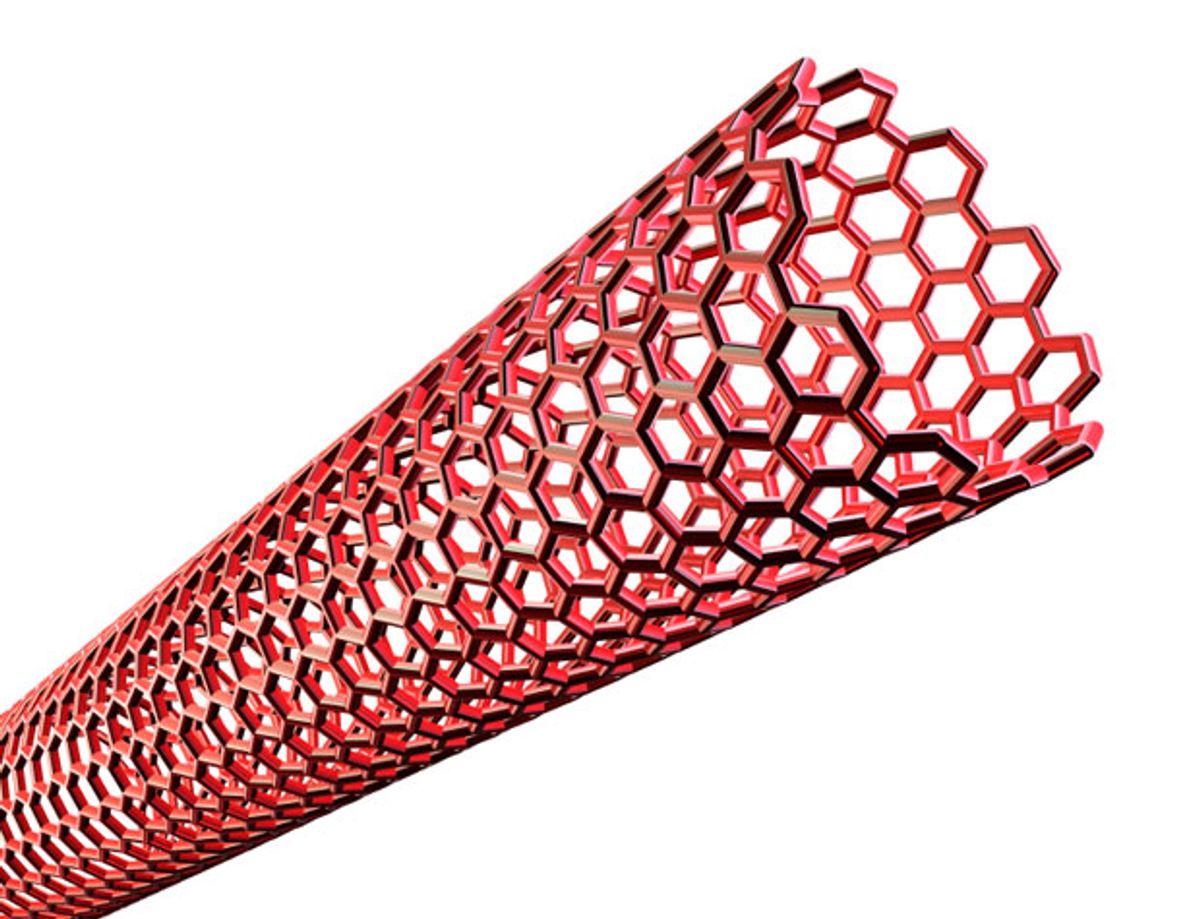Graphene has been holding the spotlight for so long in nanomaterial research now that we are beginning to forget that carbon nanotubes were once the rock star of nanomaterials for a post-silicon world.
Along with the promise of CNTs—especially SWNTs—have come some pretty big obstacles. Researchers are still struggling to get the tangled rats nest of CNTs oriented and connected in electronic devices. Producing CNTs with some kind of predictability—either semiconducting or metallic—has nearly been abandoned in favor of just finding a way to separate them afterwards.
While many methods have been developed for separating CNTs, they don’t really lend themselves to the scalability of creating the type you want in first place. But the international team of researchers found that their process produced greater uniformity among the nanotubes.
“Overall 89 percent of the tubes are semiconducting, compared to a standard of about 70 percent in normal SWNTs,” said Esko I. Kauppinen, chair of the Aalto University School of Science, in an e-mail interview with Nanoclast. “So we are not yet at fully one chirality i.e. fully uniform, but have taken significant step towards this goal.”
The research, which was published in the Nature journal Scientific Reports (“Chiral-Selective Growth of Single-Walled Carbon Nanotubes on Lattice-Mismatched Epitaxial Cobalt Nanoparticles”), realized the long-promised idea that if you could get the right nanoparticle catalysts you could selectively grow semiconducting or metallic SWNTs.
The research team formed cobalt (Co) nanoparticles with a well-defined crystal structure that could be used as catalysts in a conventional CVD process for growing the SWNTs that the researchers desired.
In addition to developing a new growth mechanism, the researchers believe that this work should lead to a better understanding of the fundamemtal science behind the growth and structures of SWNTs.
In the meantime, Kauppinen and his colleagues are now working on using the SWNTs synthesized from the new technique for thin film field effect transistors.
Image: Martin McCarthy/iStockphoto
Dexter Johnson is a contributing editor at IEEE Spectrum, with a focus on nanotechnology.




